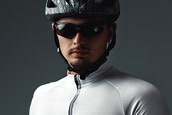
It’s interesting to note that, with the exception of Sanders, the rest of the group is fairly evenly divided between baseball and hockey. The injuries to hockey players Parent, Yzerman and Staal prompted improvements to face protection, such as visors and shields made of high impact-resistant plastic. However, while the American Hockey League required all players to wear visors beginning in 2006, the National Hockey League mandates their use only for players with less than 25 games experience. The risk of eye injuries from sports is striking when you consider these statistics from WillsEye Hospital: The average hockey puck travels at 90 to 100 mph; professional baseball players throw balls at about 95 mph; elite squash players strike the ball at 125 to 145 mph; a badminton shuttlecock has been clocked at 140 mph.
April is National Sports Eye Safety Month, and the stories of the pros mentioned here clearly indicate that not enough is being done to protect even highly valued athletes. What does that mean for the rest of us? Annual data from Prevent Blindness shows that more than 33,000 Americans sustained sports-related eye injuries in 2016, and more than 60 percent of the injured patients were under 18 years old. Those injuries include infection, corneal abrasions, fracture of the eye socket, swollen or detached retinas or a traumatic cataract. The American Academy of Ophthalmology states that 90 percent of serious eye injuries can be prevented by using the right protective eyewear. While it would seem like a no brainer, clearly many people don’t worry about protecting their eyes or their children’s eyes while playing sports.
Here’s where we come in. We need to determine the sports our patients play and recommend the appropriate eyewear. Prevent Blindness offers the following recommendations by sport: baseball—polycarbonate faceguard attached to the helmet; basketball and soccer—sports eye-guards; football—polycarbonate shield attached to faceguard; hockey—wire or polycarbonate mask; and eye-guards are recommended for all racquet sports. We need to dispel the idea that dress eyewear with polycarbonate lenses is safe for sports by educating patients that protective eyewear is about the frame as well as the lenses. If statistics and warnings don’t work, we can make sport eyewear more appealing by ensuring the eyewear provides the best vision possible, is comfortable in the context of the sport, provides convenience in terms of use, protects the wearer and looks good.
Get more information about sport eyewear with our CE “Protecting Our Amazing Eyes” at 2020mag.com/ce.
• Linda Conlin
l[email protected]
2020mag.com/education













